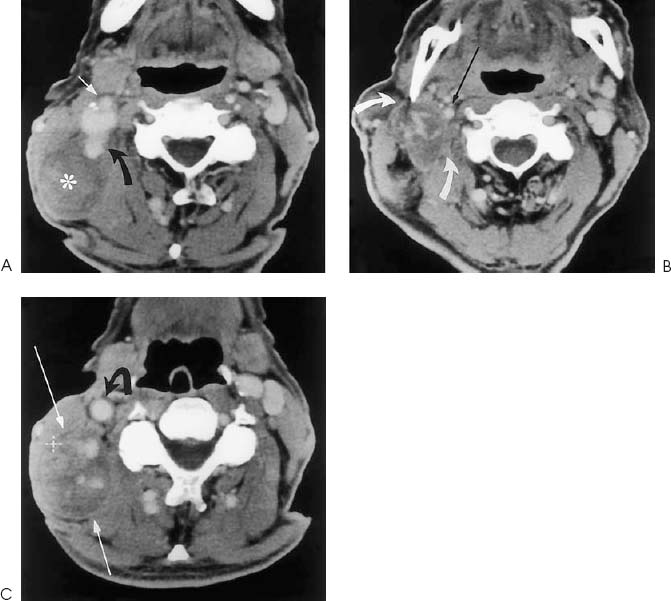Chapter 159
Trauma [Pseudoaneurysm (Dissecting Aneurysm) and Hematoma]
Epidemiology
False aneurysm of the carotid artery may be due to penetrating trauma. However, the most common cause is related to previous carotid artery surgery; for instance, following endarterectomy for atherosclerosis. Rarely, needle biopsies of neck masses may result in the formation of false aneurysms.
Clinical Findings
Patients usually present with a neck mass following prior neck surgery or biopsy. Physical examination may reveal evidence of surgical scars or skin changes due to biopsy. Pseudo-aneurysms may also occur as a complication of peritonsillar abscess, cervical adenitis, or infection of the adjacent soft tissues. The mass may be pulsatile.
Pathology
Pseudoaneurysms are due to penetrating or surgical injury to the arterial wall resulting in leakage of blood into the surrounding neck tissues. False aneurysms can expand, spontaneously thrombose, or rupture. The resultant hematoma associated with the false aneurysm can surround and compress the carotid artery or internal jugular vein. Injury to the vagus nerve is unusual and distal embolization is rare.







